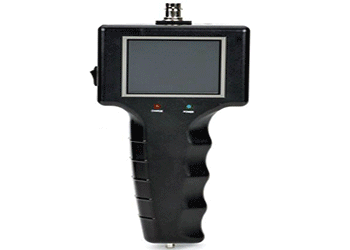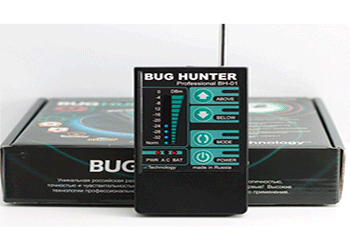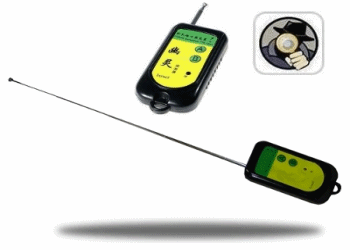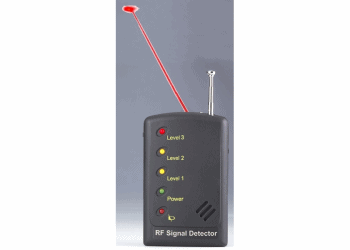Wireless Camera Detector Miami Beach Coral Gables

Wireless Camera Detector Miami Beach Coral Gables
Covert technical surveillance has been used ever since technology allowed this kind of operations, as one of the most effective ways to gather sensitive information from unsuspecting targets. With technological development, as cost dropped and efficiency increased, there is a growing trend of unauthorized surveillance of industrial and individual targets.
Technical surveillance countermeasures emerged as a natural consequence. Well-equipped and trained professional service providers are now able to locate most planted physical bugs by using professional detectors: a microphone or wireless video camera recorders or transmitters, phone taps, GPS trackers and other hardware interception devices.
Covert cameras can be a serious threat to privacy and business. There are many types of spy cameras on the market. With such a huge number of devices being offered online and at electronic retailers it’s not a wonder that we see so many reports of camera misuse being reported in the media.
While it was easy to spot cameras twenty years ago due to their large size, this has become increasingly difficult during the last decade. Cameras have become much smaller and consume a fraction of the power they did ten years ago, and you can find them wire or wireless. Due to this, covert installation in nearly any imaginable place is possible. This text will show methods to detect and locate covertly installed wireless cameras.
During the last few years, the number of wireless surveillance cameras has grown out of bounds. Wireless Cameras have been installed in many public and semi-public places such as universities, streets, supermarkets, gas stations, parking garages, cinemas, bars, shops, buses, train stations and even discos.

Wireless Camera Detector Miami Beach Coral Gables
About 25 million wireless cameras are estimated to be in operation worldwide at the time of writing. Some countries, notably Great Britain, are trying to fully cover every corner of public life with wireless cameras. The Privacy International CCTV page states that between 225 and 450 Million Dollars are spent on wireless surveillance technology in Britain per year, involving an estimated 300.000 wireless cameras. These efforts result in a person driving through the city of London being filmed at least once every five minutes. In the near future, wireless cameras may even be installed in all taxis, keeping an eye on the passengers. In Houston, Texas, about 400 cabs have been equipped with such cameras.
How to Detect Hidden Wireless Cameras and Microphones without using detectors (Physical Inspection)
The first step to detect wireless spy cameras is doing a physical inspection of the area you suspect they could have been placed.
Initial Wireless Camera Sweep (No detectors)
Do a physical search of the premises. This involves a slow, meticulous sweep of the room or building you suspect the wireless camera is located.
Look around for anything that seems different or out of places, such as flower arrangements, pictures on the wall out of level or in unusual areas, or lampshades that don’t look normal. Check for smoke detectors you didn’t add, look for a speaker that might have a wireless camera in it.
Look inside flower pots, light fixtures, and other places where a microphone transmitter can easily be hidden.
Look under couch cushions, table tops, and shelves. Underneath shelves and table tops are excellent places for miniature cameras.
Look for wires that do not seem to go anywhere, such as an appliance or another familiar device. “Hardwired” (that is, not wireless) spy equipment is less common with modern technology but is still used for permanent surveillance in commercial businesses for loss prevention.
Listen as you walk the entire room quietly. Many small, motion-sensitive wireless cameras make an almost inaudible click or buzz when they operate.
Turn off the lights and look around for tiny red or green LED lights. Some microphones have “power on” indicator lights, and if the person who sets it up is careless they may fail to cover or deactivate this feature.
While the lights are off, grab a flashlight and carefully examine all mirrors. These can be made transparent from one side so that a wireless camera can see through, but they rely on the observer’s side being darker than the area observed in order to keep the other side of the mirror reflective.
Search for pinhole cameras in the dark. A pinhole camera might have a charge-coupled device (CCD) sitting behind a tiny opening in a wall or object. Get an empty toilet paper tube and a flashlight. Put the tube over one eye like a telescope and close your other eye. As you sweep the flashlight over the room, pay attention to any small glimmers that reflect back at you.

Wireless Camera Detector Miami Beach Coral Gables
There are a number of products and techniques available to help you discover and locate covert cameras. If you have a serious concern that someone may be recording you, some of these items or procedures may help, but it is important to understand the limitations. They may not be completely accurate and certainly cannot guarantee 100% success. We have reviewed a few products and techniques and report on them here.
One way of detecting wireless cameras involves looking for radio frequency (rf) signals to help detect wireless cameras. Inexpensive detection devices are available that react to nearby radio signals covering a wide range of frequencies. These devices are not always an effective test because there are so many things transmitting rf energy these days that the unit could be overwhelmed or could provide so many false hits that you would not be able to come to any conclusion. Also, there are many cameras that do not need to use radio signals. They could be hard wired to a digital recorder or have recording capability built right into the camera unit so there would be no rf to detect.
Buy an RF signal detector or another bug detector. If you seriously believe you are being spied on, buy an RF (radio frequency) detector and do a sweep of your room, building, or home. These detectors are small, simple to use, and fairly inexpensive. However, there are bugs that use multiple frequencies in a rapid sequence called “spread spectrum” that an RF detector will not pick up. These bugs are used by professionals and require a spectrum analyzer detector and an experienced technician to find.
If you use one of the inexpensive rf detectors, do not expect to just enter a room or office and quickly be able to locate a wireless camera. If there was an object that you were suspicious of, though, the detector might be able to reveal the presence of a transmitter. Items such as a new clock on the wall or a smoke detector that did not match the others in the building could be suspicious. You could bring the rf detector close to the device to see if any signals were radiating from them. Detection of a rf signal could indicate that further investigation might be in order.
A more expensive wireless camera detector can show images it receives on a built-in screen. Versions exist that cover a variety of frequency ranges. These are effective for many types of wireless cameras but they will not work for WiFi or web-based cameras that use a computer network to communicate, and if a transmitter is not in the same frequency range as the detector then it also would not be detected.
Use your cell phone as a detector to pick up an electromagnetic field. Place a call on your cell phone, then wave the device around where you think there might be a camera or microphone. If you can hear a clicking noise on the call, it means your phone might be interfering with an electromagnetic field.
In most cases, however, visual inspection is not sufficient and must be backed by means of one or several of the techniques, including sophisticated detectors. It is advisable to use several of these techniques because this makes detection more reliable in regard to both false positive and false negative alerts. Wireless Camera Detector Miami Beach Coral Gables
Alternative devices that could be used as wireless camera detector
Metal detector
Though metal detectors originally were not intended to be used as counterespionage tools they can be of use to the counterespionage specialist. Most surveillance devices, including wireless cameras, contain conductive parts that can be detected with a metal detector.
The main problem with metal detectors is that they will detect any conductive object.
Because there are a lot of conductive objects in most environments a lot of false alerts will be experienced. This makes reliable detection of wireless devices very difficult.
Depending on the type of metal detector that is used (BFO, pulse or VLF) it is possible to discriminate several metals, but this is of low use in this case. Despite this, metal detectors may be still useful if they are used in combination with other tools. In addition, they work quite fine for scanning wooden objects such as desks or cupboards that do not contain any conductors. Wireless Camera Detector Miami Beach Coral Gables
Non-Linear Junction Detector
A device more suited to the application of counter-espionage is the so-called “Nonlinear Junction Detector” (NLJD). Most electronic surveillance devices including wireless cameras contain nonlinear components, such as transistors or tunnel diodes. In contrast to metal detectors, NLJDs will only detect non-linear components. Regular conductive objects will not trigger an alert.
The NLJD detector emits a clean signal in the 900MHz area and the reflections of this signal are analyzed for harmonics. Non-linear components will cause characteristic harmonics to appear within the reflected signal. Those harmonics are not observed in signals reflected by linear components. Non-linear objects can be located at distances of up to a few inches by slowly sweeping suspect areas. NLJDs as a detector can even detect unpowered or defective surveillance devices.
X-ray inspection systems as a detector
Counter Espionage specialists use X-ray based inspection systems when they suspect that covert surveillance devices were embedded into objects that cannot be disassembled easily. As an example, an X-ray scan detector may be done for detecting bugs that are disguised as standard components (such as capacitors). Other examples are furniture or devices too costly or precious to disassemble them, such as objects of high personal value or antiques. Similar X-ray scanning detectors systems are used for the routine inspection of luggage at airports. Wireless Camera Detector Miami Beach Coral Gables
Video transmitter detectors
In many cases, the attacker is unable to install any video cables that conduct the video signal from the camera to his video screen. There are other means of transmission that are far more suited to the attacker’s needs than plain video cables, which are time-consuming to install. Next techniques for transmitting video signals as well as techniques to detect such transmissions
Most cameras emit a typical spectrum of electromagnetic noise. The emissions mostly result from the pixel readout clock signal and components of the video signal. The emitted spectrum is quite similar to any camera that generates a standard video signal. It is possible to locate electronic cameras by scanning for this spectrum, and that is what a transmitter detector look for. Depending on the frequencies of the signal components proper shielding may foil detection attempts, but often cameras are not shielded at all. Wireless Camera Detector Miami Beach Coral Gables
Transmitter Detectors Functionality
An important component of any video signal spectrum is the line frequency. The line frequency specifies at which intervals the horizontal sync pulse occurs. With standard video signals, the line frequency is roughly 16 kHz. The exact value is 15.625 kHz for CCIR/PAL video signals and 15.750 kHz for EIA/NTSC video signals. It is emitted at low strength by video cables and video cameras. Insufficiently shielded cameras and can be detected by means of VLF (Very Low Frequency) receivers. One author claims that similar receivers were used by the German “Post” for locating unlicensed TVs. Simple consumer grade VLF receivers are available at some spy gadget shops. They are easy to use but quite expensive and not very flexible. Wireless Camera Detector Miami Beach Coral Gables
Most electronic devices have at least one thing in common: they heat up because of losses along conductors. After some time, the device will have warmed up enough to emit a thermal spectrum that can be located by a detector by suited thermal imagers. This is especially useful for wireless cameras as those have a high power consumption and therefore high thermal losses.
Thermal Emissions Spectrum Analysis.
The detector of this type uses a sensitive thermal imager that can detect thermal differences as low as 0.1 degrees Celsius. The TESA camera looks similar to a regular video camera. The difference is that the thermal imager will display objects that radiate thermal energy as bright spots. In contrast to the techniques that rely on various 25 electronic emissions, this technique is not easily fooled if the camera is switched off as soon as a bug sweep is suspected. This is because the camera and the surrounding matter will keep its raised temperature long enough to be detected by TESA scans. Wireless Camera Detector Miami Beach Coral Gables
WIRELESS VIDEO DETECTOR
This unit scans the spectrum of video frequencies, automatically locking onto any covert video frequency and then displays the image.
HIDDEN CAMERA DETECTOR
This unit is used to scan suspect areas and objects with Infra-Red LEDs and detects the coating on ANY camera lens.

Wireless Camera Detector Miami Beach Coral Gables
SpyWorld has several units of wireless camera detectors that have advanced features, for a statistical, logical approach for finding hidden wireless cameras. The main idea is having the proper equipment to not only locate the wireless camera signal source but to positively identify and classify the actual content of the transmission. Wireless Camera Detector Miami Beach Coral Gables
With the also added ability to tune out unwanted wireless sources of “spurious emissions”, our bug detectors can be very useful in the hands of an individual. With the proper technical literature that is encompassed in our owners and operator’s manuals, any individual or technician will be able to use the professional features in our detectors, to provide a professional quality counter-surveillance sweep.
Remember that not all wireless camera detectors or spy equipment that is sold in the open marketplace for counter-surveillance detection are suitable, nor has all the features needed to provide a detailed counter-surveillance sweep.
Spy Word is located in Miami Beach/Coral Gables, Florida. Contact us for professional advice and to acquire wireless cameras and wireless camera detectors.Wireless Camera Detector Miami Beach Coral Gables
[email protected] / [email protected]
Spy Store Miami & Spy Shop Miami
Miami Beach • Miami Gardens • Aventura • Coral Gables • Doral • Hialeah • Hialeah Gardens • Homestead • Kendall • Key Biscayne • Miami • Miami Lakes • North Miami • North Miami Beach • Opa-Locka • Palmetto Bay • Pinecrest • Pinecrest / Monroe Couty • South Miami • Miami Beach




